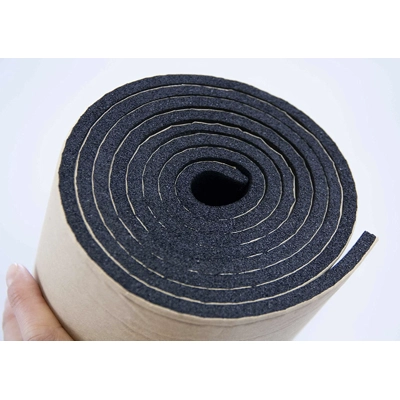How much insulation do I need for my vehicle?
The amount of insulation you need for any vehicle depends on the model and the specific areas you want to insulate. Here’s a general guide to help you estimate:
Small Car

Key Areas to Insulate:
- Floor: Front and rear passenger areas typically require 2-3 square meters.
- Doors: Each door usually needs around 0.5 square meters, so for two doors, expect 1 square meter.
- Roof: This requires approximately 1-2 square meters.
- Boot (trunk): Around 1 square meter.
- Bonnet (under the hood): Typically 0.5-1 square meter.
- Side Panels/Wheel Arches: Around 1-2 square meters depending on the design.
Estimated Total:
For a small car, you’ll need approximately 6-8 square meters of insulation to cover most areas. If you’re focusing on specific sections (e.g., just the floor and doors), you might only require 3-5 square meters.
Tips:
- Measure the areas you want to insulate for greater accuracy.
- Buy slightly more insulation than calculated to account for cutting and fitting errors.
- Use materials specifically designed for automotive soundproofing and thermal insulation for the best results.
Land Rover

Key Areas to Insulate:
- Floor: This includes the front, rear passenger areas, and boot space.
- Doors: Each door typically requires around 0.5 to 1 square meter.
- Roof: Depending on the size, this might need 2-3 square meters.
- Bonnet (under the hood): Usually around 1.2-1.5 square meter.
- Side Panels: Requires 1-2 square meters depending on the design.
- Wheel Arches: Around 0.5-1 square meter per arch.
Estimated Total:
For a Land Rover (e.g., Defender, Discovery, or Range Rover), you will likely need 10-15 square meters of insulation if you plan to cover all the above areas comprehensively. If insulating only specific areas (like doors and floors), you might require less, around 5-7 square meters.
Tips:
- Measure each section individually for accuracy.
- Consider buying extra insulation to account for overlaps, cutting errors, or additional coverage needs.
- Use high-quality adhesive insulation materials specifically designed for automotive use for durability and effectiveness.
- For a sound deadening we recommend PeaceMAT XR butyl mats. You need 40-60 sheets or 1 and a half roll for a Land Rover.
Short Wheel Base Van

Key Areas to Insulate:
- Floor: Covers the cargo area and driver/passenger cabin. This requires approximately 4-5 square meters.
- Walls (Sides): The side panels, including areas with windows, need around 6-8 square meters.
- Roof: Depending on the van's dimensions, the roof typically requires 3-5 square meters.
- Doors:
- Rear doors: 1-2 square meters.
- Sliding door: 1-2 square meters.
- Wheel Arches: These areas typically need 0.5-1 square meter.
Estimated Total:
For a short wheelbase van, you will need approximately 15-20 square meters of insulation to cover all key areas comprehensively.
Tips:
- Measure your van's dimensions: For accuracy, measure each section to calculate exact coverage.
- Consider overlaps and wastage: Buy an extra 10-15% of insulation to account for trimming and fitting errors.
- Material selection: Use a combination of sound-deadening mats (like PeaceMAT) for noise control and closed-cell foam or foil-backed insulation like SOShield 10mm, for thermal protection.
Medium Wheel Base Van

Key Areas to Insulate:
- Floor: Includes the cargo area and front cabin. This typically requires 6-8 square meters.
- Walls (Sides): The side panels, including areas with or without windows, generally need 8-10 square meters.
- Roof: The roof area requires approximately 5-7 square meters, depending on height and length.
- Doors:
- Rear doors: 1-2 square meters.
- Sliding door: 1-2 square meters.
- Wheel Arches: These areas require about 0.5-1 square meter each.
Estimated Total:
For a medium wheelbase van, you’ll need 20-25 square meters of insulation to cover all the key areas comprehensively.
Tips for Insulating a MWB Van:
- Measure precisely: Take measurements for each section of your van to confirm the estimate.
- Buy a bit extra: Purchase 10-15% more material to account for trimming and fitting.
- Combine insulation types: Use sound-deadening mats (e.g., PeaceMAT XR) for noise reduction and closed-cell foam (e.g., SOShield 10mm) for thermal insulation.
- Focus on problem areas: Prioritize noisy or drafty spots, such as wheel arches, doors, and the roof.
Long Wheel Base Van

Key Areas to Insulate:
- Floor: Covers the entire cargo and cabin floor area. This generally requires 8-10 square meters.
- Walls (Sides): The side panels, including areas with or without windows, typically need 10-12 square meters.
- Roof: The roof area usually requires 6-8 square meters, depending on the van's height and length.
- Doors:
- Rear doors: 2 square meters.
- Sliding door: 1-2 square meters.
- Wheel Arches: Each wheel arch requires approximately 0.5-1 square meter, so a total of 1-2 square meters.
Estimated Total:
For a long wheelbase van, you will need approximately 25-30 square meters of insulation to comprehensively cover all areas.
Tips for Insulating an LWB Van:
- Measure for accuracy: Measure each section of the van to confirm specific coverage needs.
- Plan for extra material: Purchase 10-15% more insulation to account for cuts and adjustments.
- Combine insulation materials: Use sound-deadening mats (e.g., PeaceMAT) for noise reduction and closed-cell foam (e.g., SOShield 10mm) or foil-backed insulation for thermal control.
- Focus on critical areas: The roof, floor, and wheel arches are key for minimizing noise and temperature changes.























































